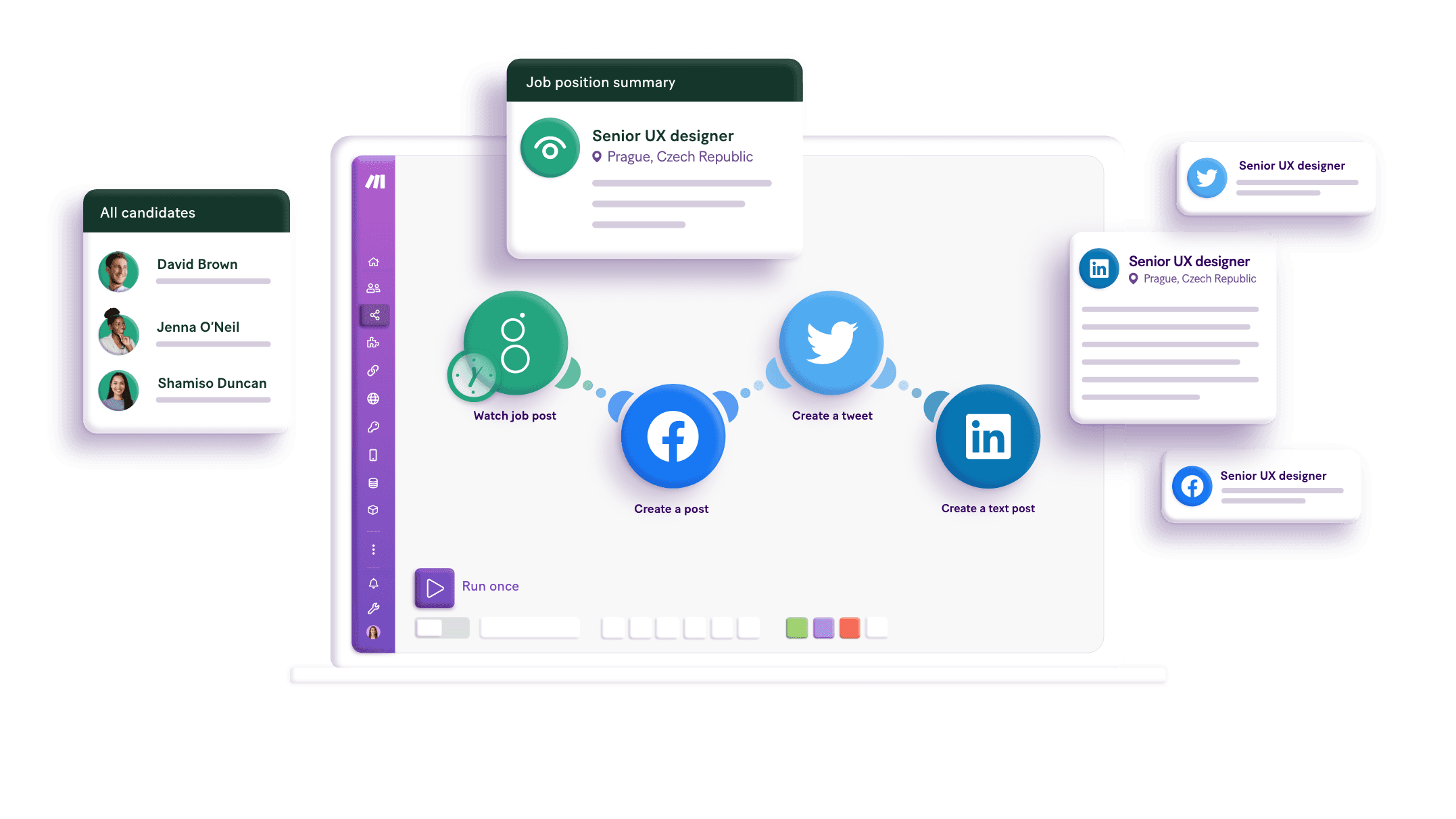Connect Facebook Messenger and Google Translate integrations
Harness the power of Facebook Messenger and Google Translate to facilitate real-time multilingual interactions, breaking language barriers and improving global communication efficiency.
Trusted by thousands of fast-scaling organizations around the globe
Automate your work. Build something new.
Just drag and drop apps to automate existing workflows or build new complex processes. Solve problems across all areas and teams.

Build your Facebook Messenger and Google Translate integrations.
Facebook Messenger can be effectively utilized as a trigger within automation processes, initiating real-time interactions and collecting customer inquiries. When paired with Google Translate as an action, these incoming messages are instantly translated into various languages, enabling multilingual communication. This integration allows for automatic replies in multiple languages, providing a solution for overcoming language barriers in chat interfaces. By combining these functions, you enhance communication, improve productivity, and deliver a globally inclusive experience.
Retrieves the details of a sender by its PSID. Must first be approved for the Business Asset User Profile Access feature.
Sends a new message or attachment by the recipient identifier.
Sends a sender action by the recipient identifier.
Translates a text between two languages.
Uploads an attachment and gets an attachment ID.
Triggers when a new message is received.
Popular Facebook Messenger and Google Translate workflows.
Explore our 'Popular Facebook Messenger and Google Translate' section. Discover how real-time multilingual communication can extend your global reach, automate workflows, and improve customer experiences. Integrate and leverage the power of both platforms for maximum efficiency today!
How to setup Facebook Messenger and Google Translate in 5 easy steps
Set up a new Google project
Begin by visiting Google Cloud Platform to create a new project that will enable you to use Google Translate.
Enable Google Translate API
Activate the Google Translate API within your project to allow other applications to access its features.
Create an API key
Generate a unique API key for your Google Translate project—this will allow your applications to connect securely.
Log into Make
Access Make to start building your automation scenario by adding the Google Translate feature.
Connect and automate
Use the API key in Make to complete the connection, then start setting up automated processes using Google Translate.
Maximize multilingual engagement by integrating Facebook Messenger and Google Translate
Integrate Facebook Messenger with Google Translate for streamlined communication, allowing instant translation of messages to improve global reach and customer satisfaction.
Enable instant translation of messages in Facebook Messenger, fostering communication across languages.
Facilitate conversations with international audiences by overcoming language barriers using automated translation.
Save time by automatically translating and responding to messages without manual intervention.
Provide prompt and understandable responses to users, improving satisfaction and engagement.
FAQ
How it works
Traditional no-code iPaaS platforms are linear and non-intuitive. Make allows you to visually create, build, and automate without limits.







